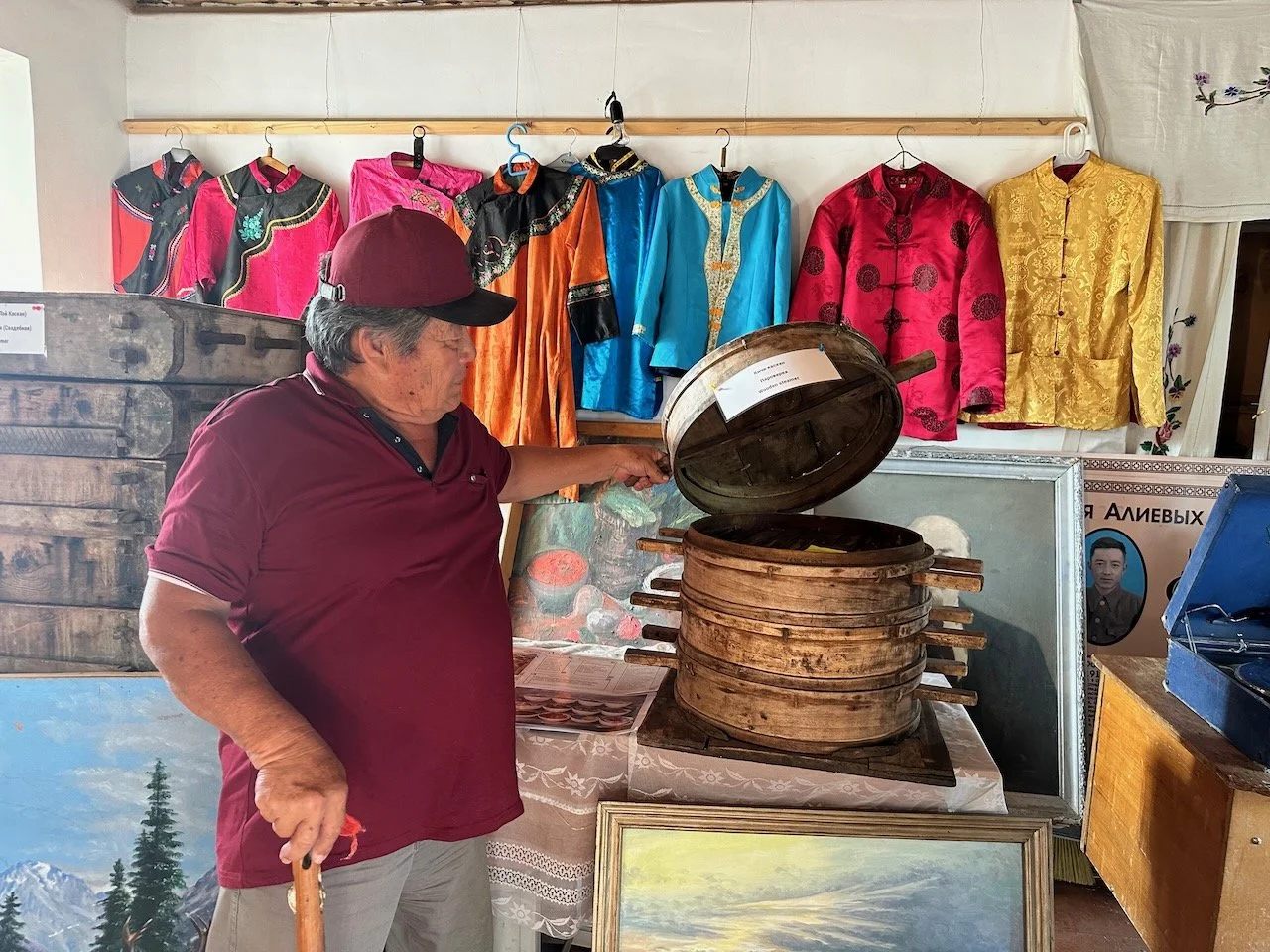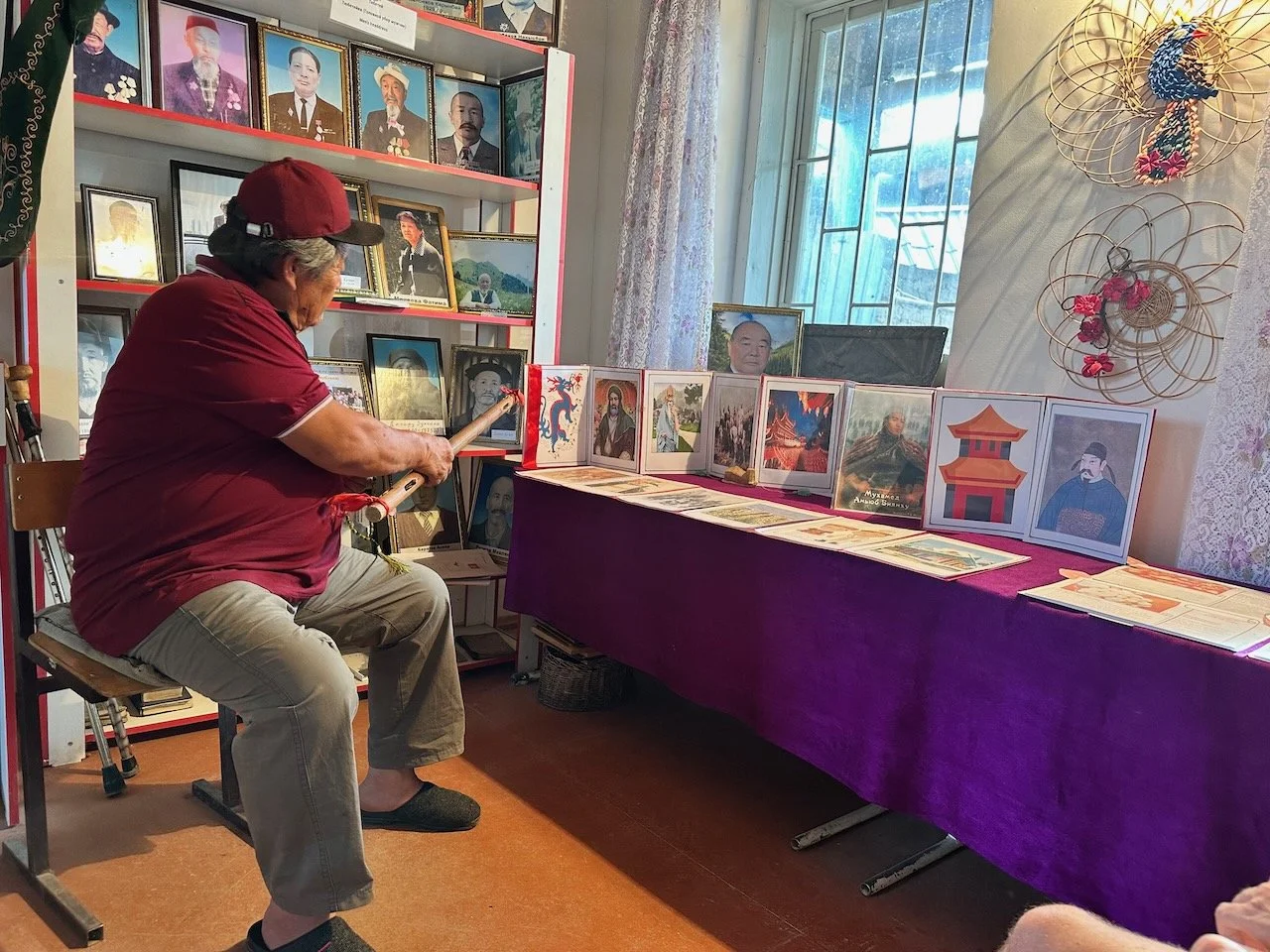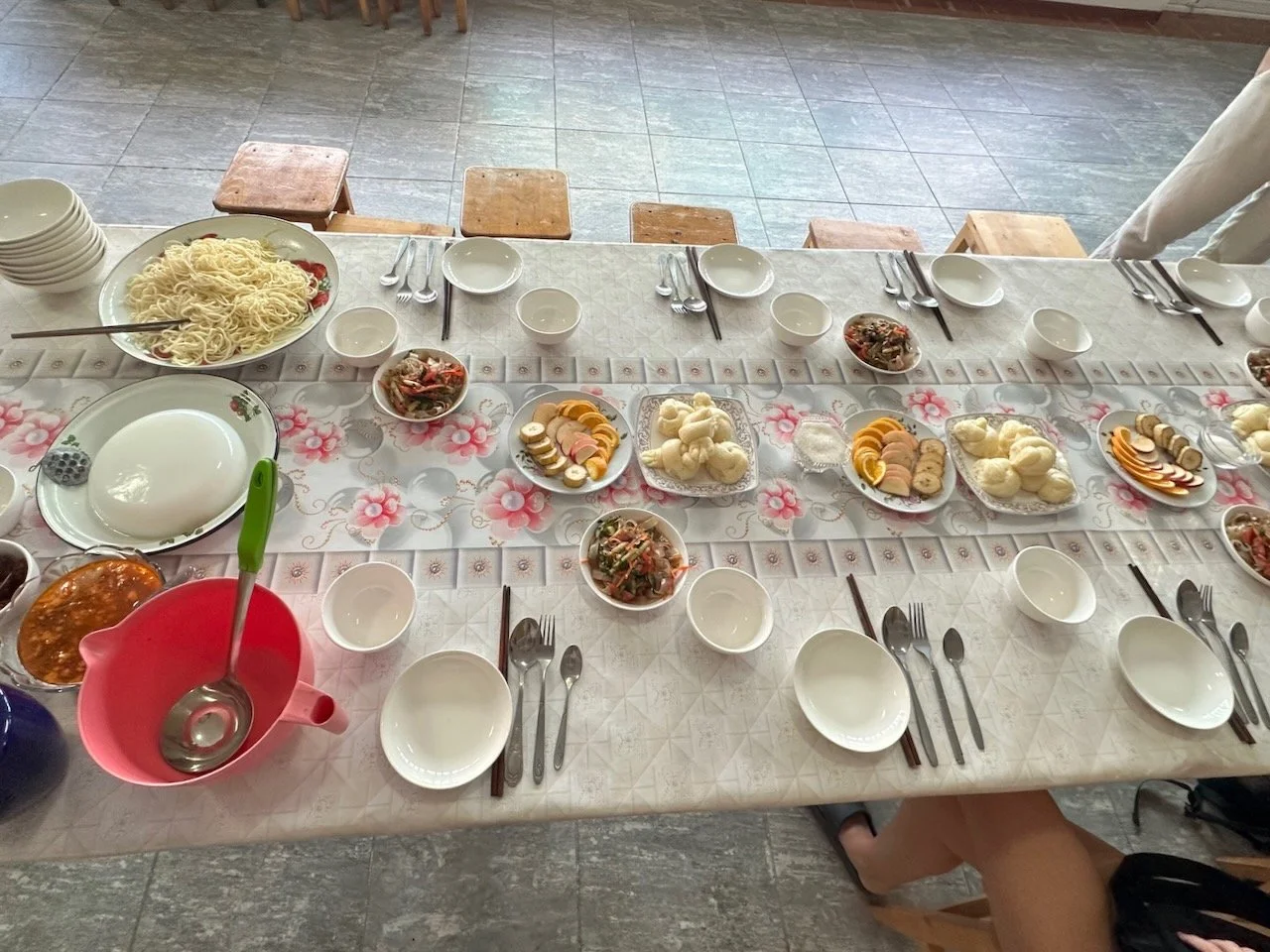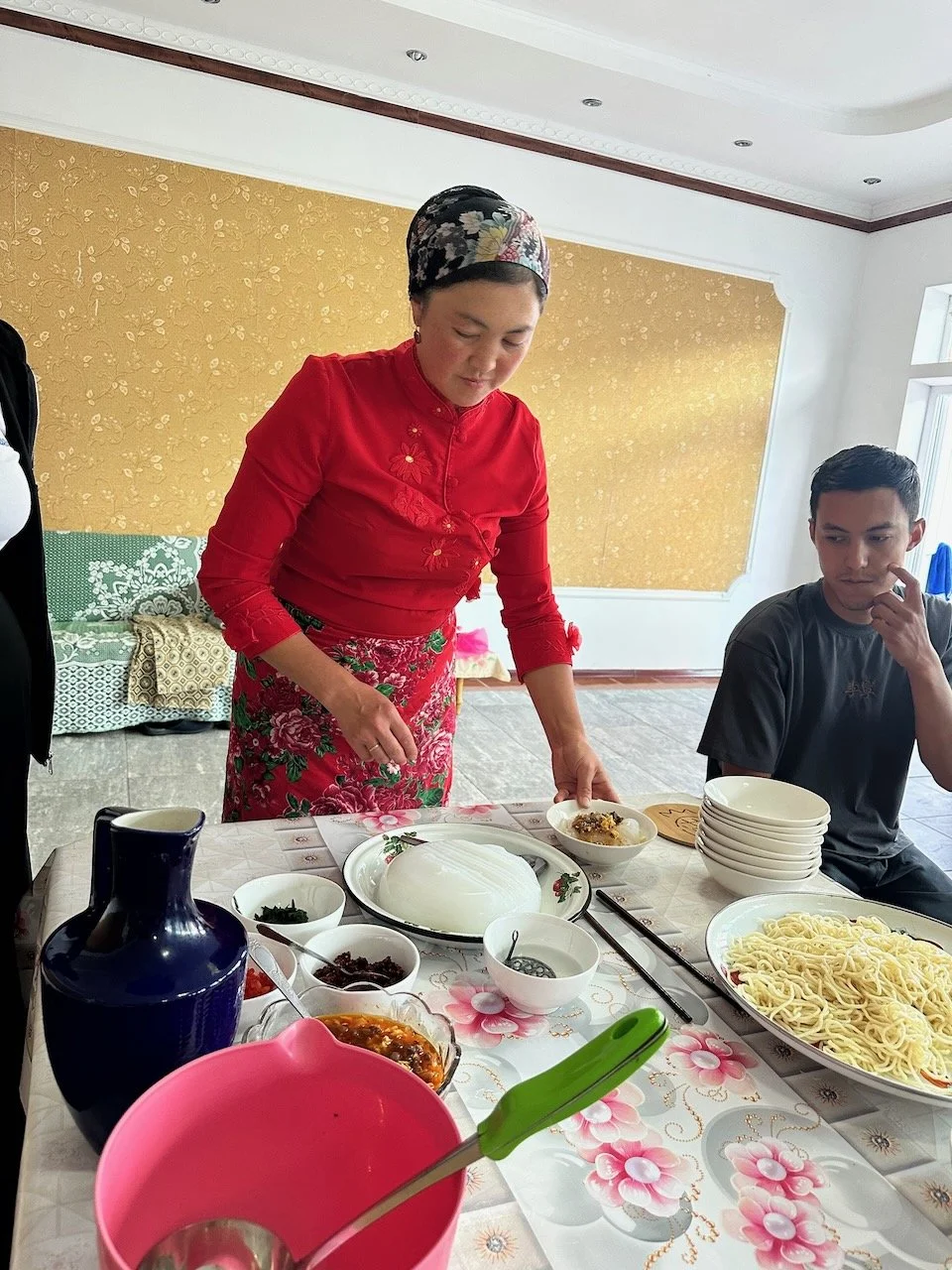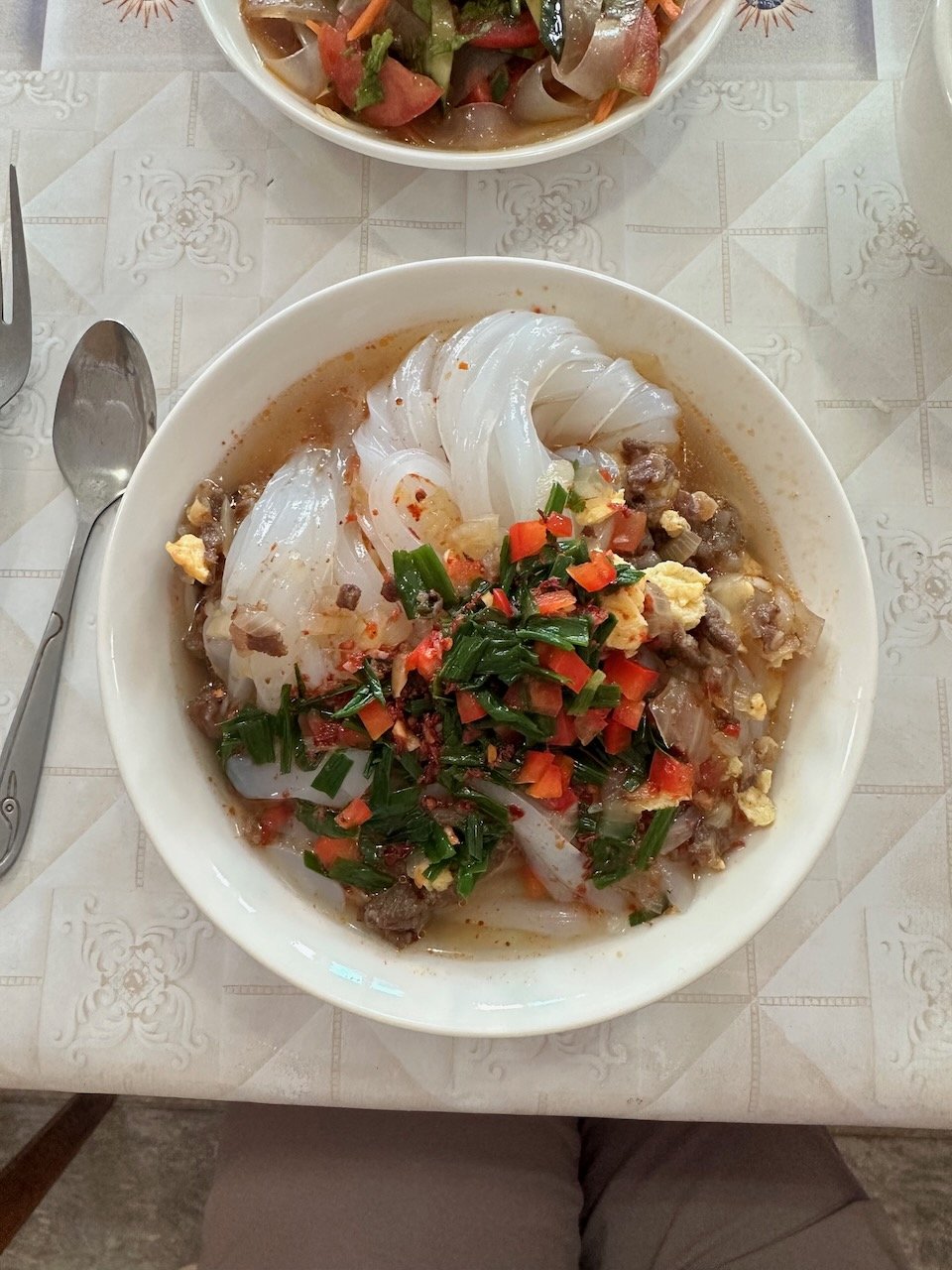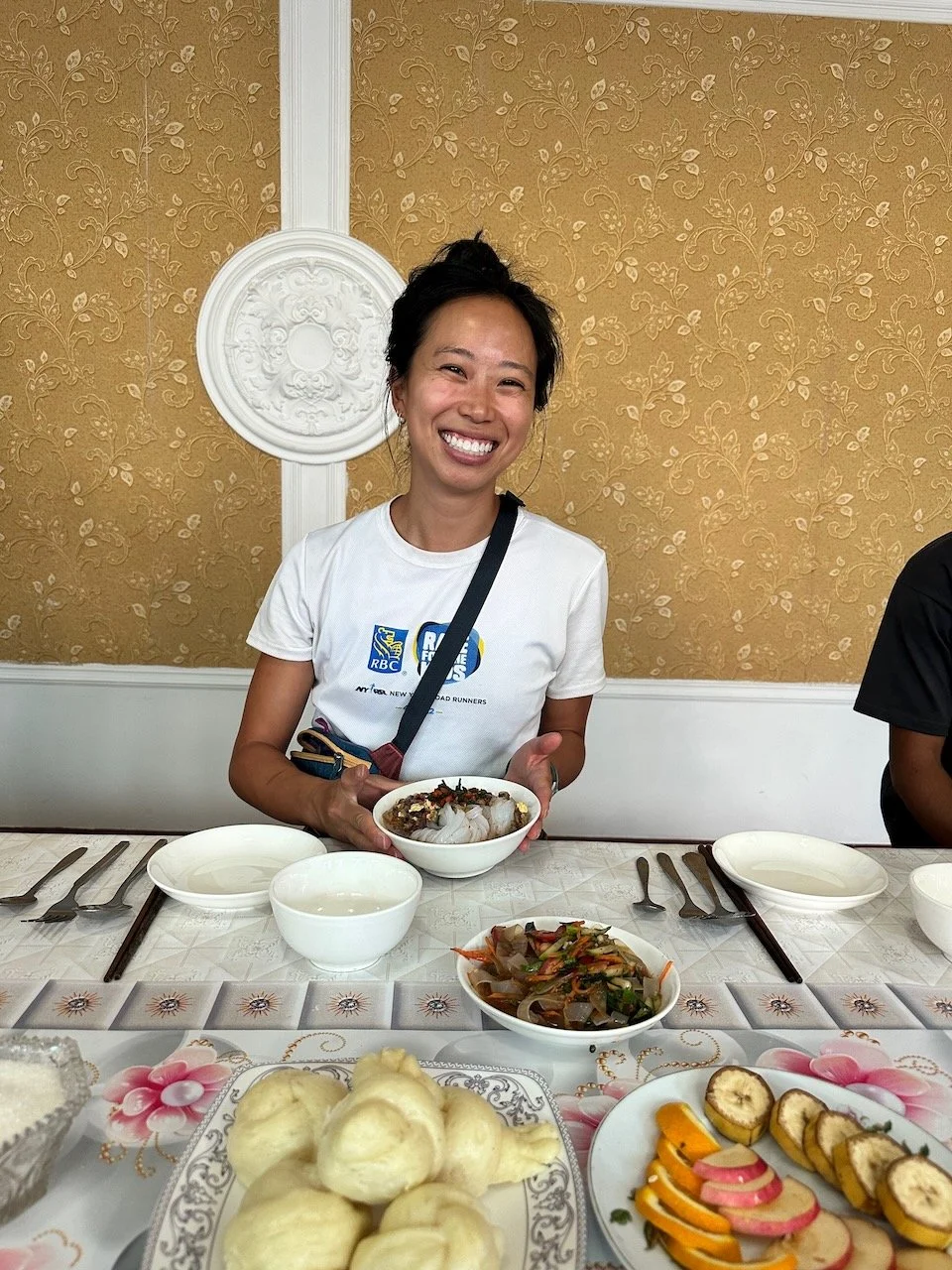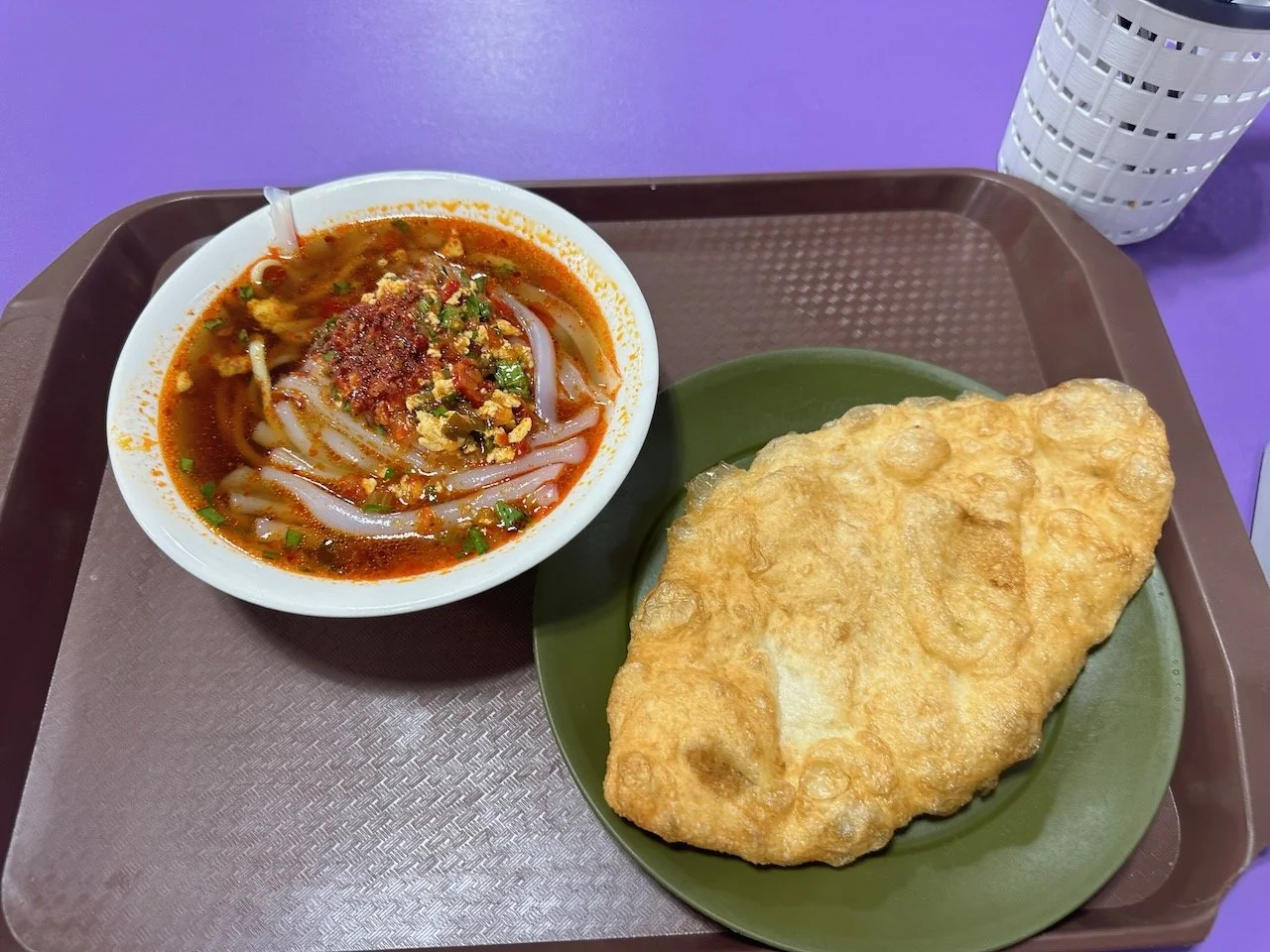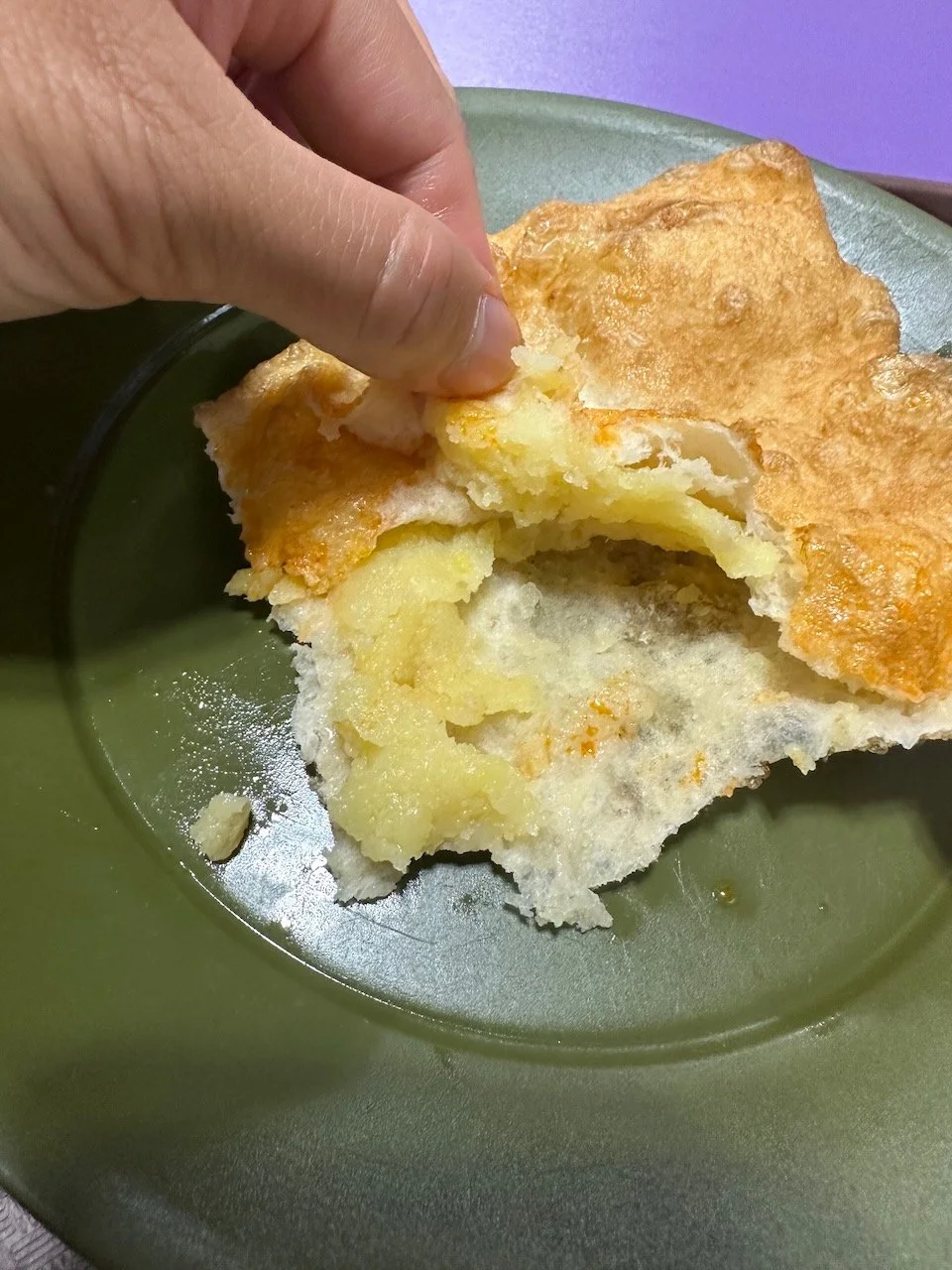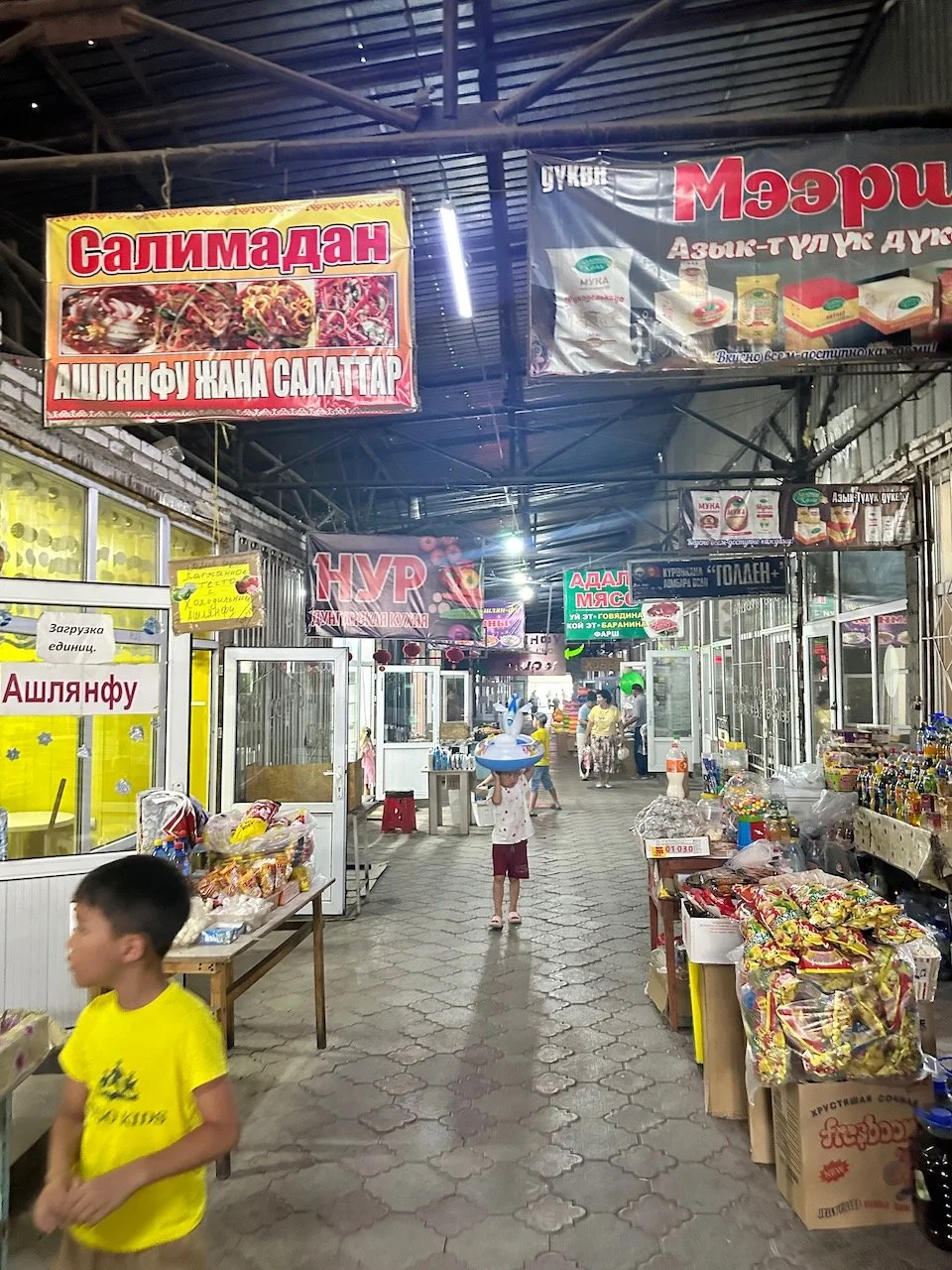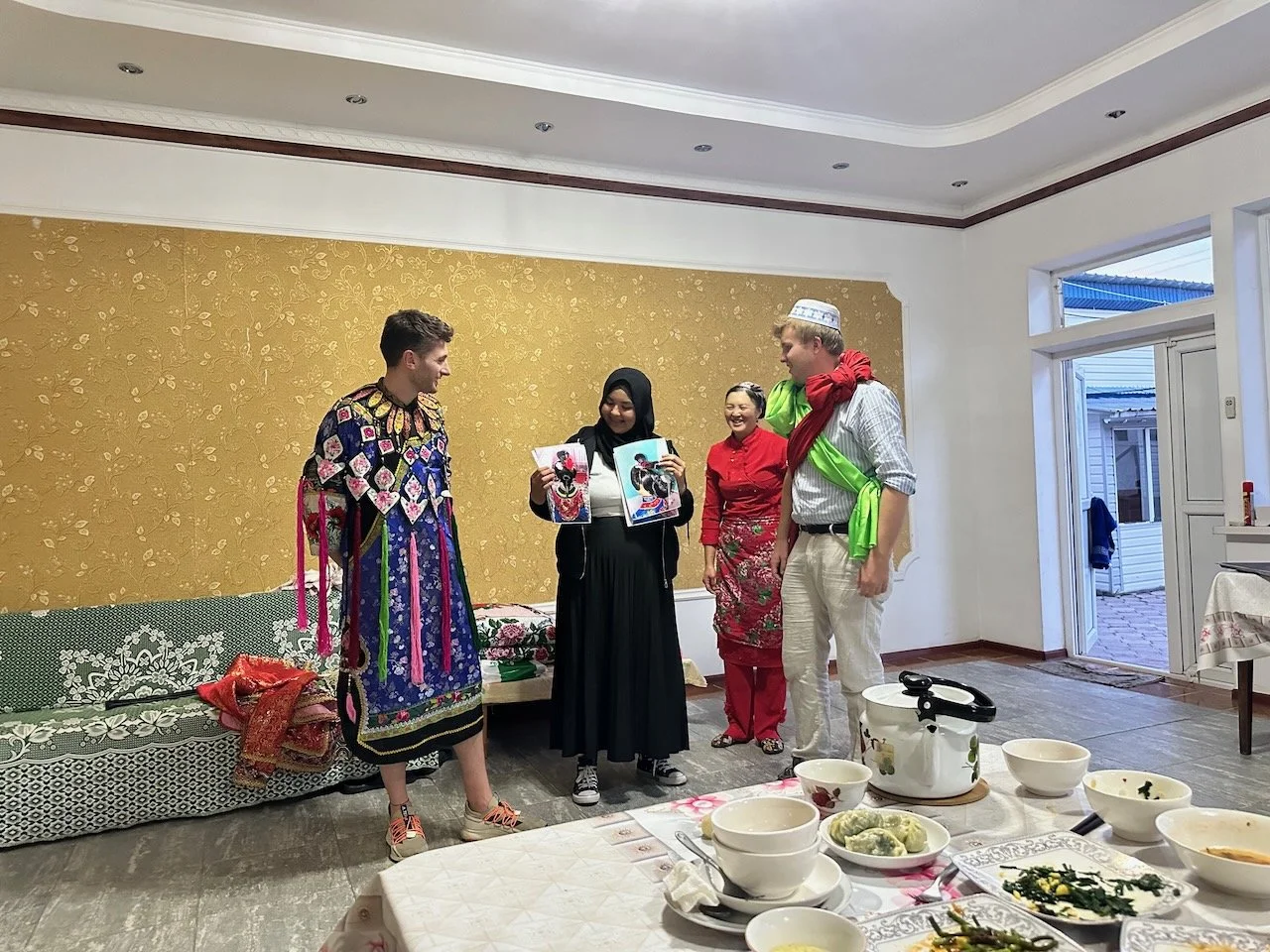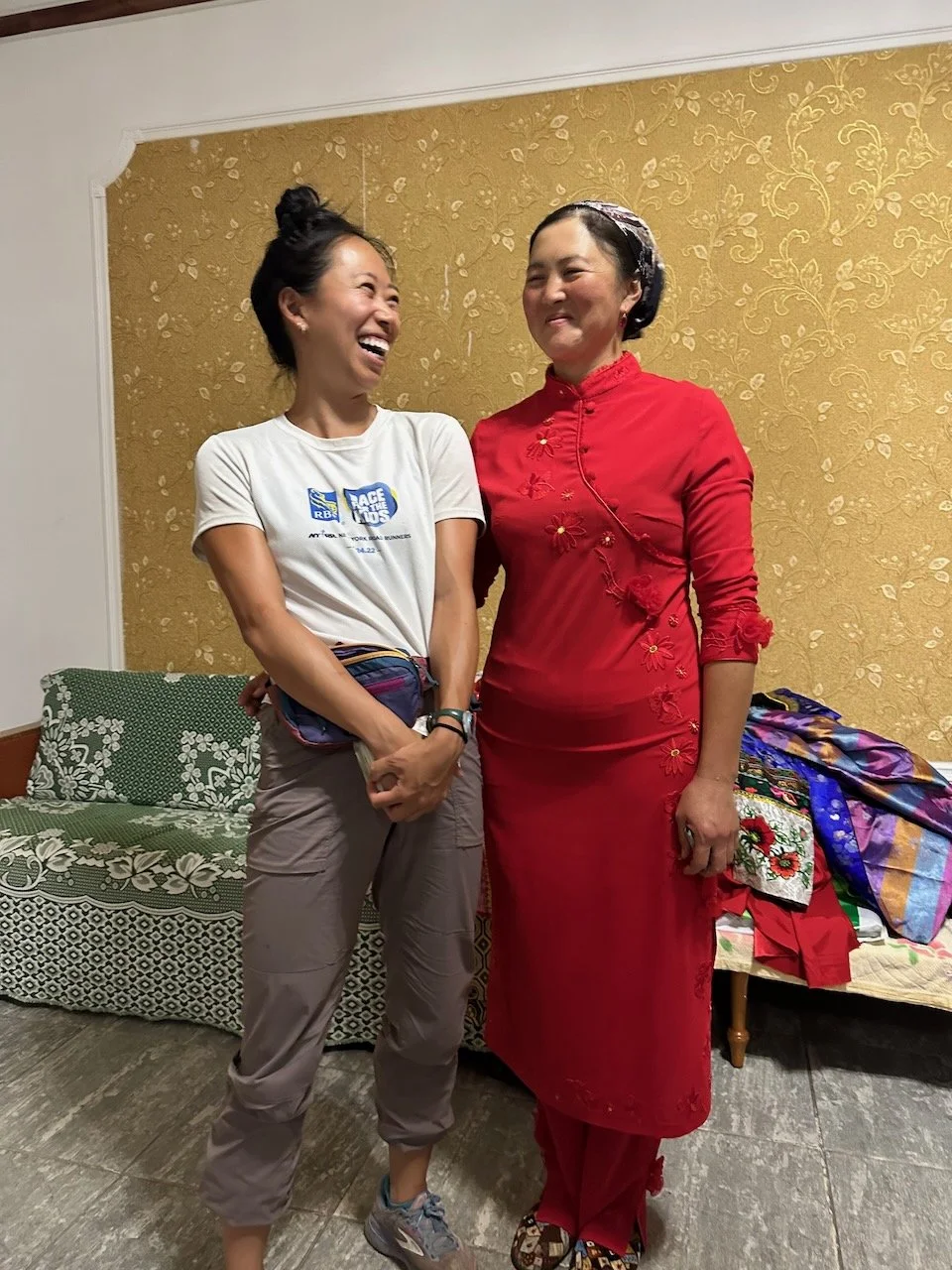Feeling at home in Yrdyk, Kyrgyzstan
Historically food has been the primary way for me to explore a new destination and experience local culture while traveling. What’s been interesting about this trip so far is that I haven’t really explored the local food scene as much as I would normally - normal being a “typical vacation”. A large part of this is because I’m planning on traveling for a while (…potentially for the foreseeable future - sorry Mom and Dad!) and as a result it’s more economical to cook*, or more accurately assemble foods, especially when embarking on multi-day treks or taking long bus rides from point to point.
*Cooking is a bit of a stretch word to use when I’ve been eating salads (so much delicious fresh produce) or packing sandwiches and hearty snacks for long treks
Here is an example of a typical salad I’ll have for lunch or dinner. The local favorite is tomato and cucumber, but I’ll usually add corn and/or peaches. I love that produce here is fresh, cheap, and (I think) organic.
When I found out that there was an opportunity to join a traditional dinner in a village near Karakol, a popular hiking destination in Eastern Kyrgyzstan where I was based, I jumped at the opportunity. I had just finished a three-day trek to Alakol Lake and welcomed the idea of sitting down to a meal with a local Dungan family, especially after I found out that the Dungan people are ethnically Chinese Muslims who migrated to Kyrgyzstan 164 years ago. After being away from home for three months, this seemed like an opportunity to get a taste of home.
We drove to the Dungan village of Yrdyk, which was established in 1877 by the early immigrants from China, known as 回族 in Chinese. There we visited the local museum where the elderly docent shared information about the history and legend of the Dungan people and showed us important artifacts from this village. Upon walking into the museum, I felt a rush of emotion at seeing a banner with traditional Chinese characters hanging from the wall, Chinese art, and large bamboo steamers. It was heartwarming to see and be surrounded by familiar objects in a place so far from home. This feeling would only grow as the docent continued to speak about Dungan culture and customs. It turns out that they speak an old dialect of Chinese that sounds most similar to Cantonese - more on that in a bit when we get to the main course! They also use bamboo steamers to create 包子 filled with meat and vegetables, have similar styles of embroidery and art, and viewed foot binding on women as a sign of beauty.
We also learned about the legend of the Dungan people, and the docent was quick to remind us that what he was about to tell us was legend, not fact. Here’s a quick summary about the legend of how the Dungan people came to be:
The Emperor of China (not sure which one) dreamed of being attacked by a monster but was then saved by some man. When the Emperor shared this dream with his advisors and described the man who saved him from the monster, his advisors identified the man as the Prophet Mohammad.
As a result, the Emperor invited Mohammad to visit China. Mohammad wasn’t able to come so he sent three of his students in his steed, and these students traveled from Saudi Arabia to China accompanied by a large army. The journey was long and hard so only one student ended up making it alive to China.
After residing in China for three years, the Arab army yearned to go back home. However the Emperor wanted the army to stay to help protect his borders (the Great Wall) against the Mongols. Being the smart man he was, he asked his wife for advice on how to keep the army in China. She said that the best way to keep them here would be to have them marry local Chinese women so that the army men could create their own families in China.
The Emperor hosted a banquet for the Arab army and invited the most beautiful Chinese women for the men to choose as wives and start new families. So, the legend of the Dungan people was born - Dungans come from Arabian fathers and Chinese mothers; their religion is inherited from their fathers, their culture from their mothers.
After visiting the museum we took a very quick drive around the corner to the home of the family hosting us for dinner. They live in the first building that was erected when the Dungan Village was founded back in 1877. We were greeted with a beautiful table setting that was already filled with food and fruit. I had heard that we’d be eating a many dishes, and I couldn’t wait!
Okay enough about ashlan-fu - back to the Dungan family dinner!
We had several dishes to share and each one reminded me a little bit of home. Because the Dungan originated from China, they used a lot of similar flavor profiles as Chinese cooking. Almost all of the dishes evoked a sense of my parents’ home-cooked food and made me nostalgic for their cooking.
After dinner we were introduced to Dungan wedding traditions, and the host brought out a set of wedding clothes for the group to try on.
We ended the night with full bellies and lots of laugher, and it was a lovely way to end my time in Karakol.
I’m grateful to a chance meeting with a woman on the street - I noticed she was a foreigner and we got to talking, and she is the one who recommended I check out this activity sponsored by Destination Karakol, the local community-based tourism organization.



